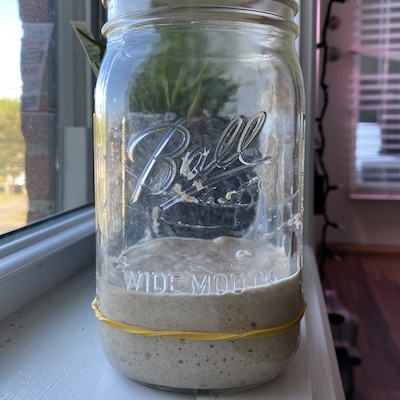Sourdough baking, at its core, is a return to traditional methods, a reliance on natural fermentation that yields bread with unparalleled complexity of flavor and texture. As someone who has tumbled down the science of sourdough rabbit hole, I can attest to the unique satisfaction derived from working with a living culture. This guide is designed to provide a thorough understanding of a fundamental element of sourdough baking: the starter.
Understanding the Nature of a Sourdough Starter
A sourdough starter is a symbiotic culture of wild yeast and lactic acid bacteria, a carefully cultivated ecosystem that serves as the leavening agent for your bread. Unlike the homogenous nature of commercial yeast, a sourdough starter possesses a diverse microbial population. This biodiversity is the key to sourdough’s distinctive tangy flavor profile, improved digestibility, and extended shelf life.
Cultivating Your Starter: A Study in Patience and Precision
While acquiring a mature starter from an established baker is certainly an option, creating your own provides invaluable insight into the fermentation process. It is a worthwhile endeavor that fosters a deeper connection with the craft.
Phase 1: Initiating the Culture (Days 1-3)
- Ingredients: The foundation of your starter will be unbleached all-purpose or bread flour – organic, if available – and non-chlorinated water. The absence of chlorine is essential as it can inhibit the growth of desirable microorganisms.
- Procedure: Combine 50 grams of flour with 50 grams of water in a clean, non-reactive container (glass is ideal). Mix thoroughly to ensure complete hydration. Cover the container loosely with a breathable lid such as a coffee filter, cheese cloth, or a loosely fitting lid. Maintain the mixture at a consistent room temperature, ideally between 70-75°F (21-24°C). Agitate the mixture by stirring once or twice daily to introduce oxygen.
Phase 2: Nurturing the Culture (Days 4-7 and beyond)
- Feeding Regimen: Implement a regular feeding schedule, once or twice daily, depending on the ambient temperature. A warmer environment will accelerate fermentation, necessitating more frequent feedings. Before each feeding, discard approximately half of the starter. Replenish the remaining starter with 50 grams each of flour and water.
- Observation and Assessment: Observe the starter for signs of activity. The emergence of small bubbles, a gradual increase in volume, and the development of a mildly sour aroma are positive indicators. The time it takes to show these signs can vary and is often longer than one might expect. Be patient and observant.
- Maturation: Continue the feeding cycle diligently for a minimum of one week, potentially extending to two weeks or more. A mature starter will reliably double in volume within 6-8 hours after feeding and will exude a pleasantly sour, but not acrid, aroma. This indicates it is active and ready for use.
Starter Maintenance: Ensuring Longevity
Once your starter has reached maturity, you can adjust the maintenance routine based on your baking frequency. For regular bakers, maintaining the starter at room temperature with daily feedings is appropriate. For less frequent baking, refrigerate the starter and feed it weekly. Prior to baking, retrieve the starter from the refrigerator, feed it, and allow it to return to room temperature and regain its activity.
Harnessing the Power of Your Starter: Baking Bread
With an active starter, you are now equipped to embark on the rewarding journey of baking sourdough bread! There are tons of recipes readily available, catering to various skill levels and preferences.
Key Considerations for Sourdough Baking:
- Precision in Measurement: Employing a kitchen scale is strongly recommended for consistent results. Accurate measurements are paramount in sourdough baking.
- Adaptability: Sourdough baking is an iterative process that requires adjustments based on environmental factors and the specific characteristics of your starter. There will be a learning curve.
- Time Commitment: Sourdough fermentation is a slow process. This extended fermentation is crucial for developing the characteristic flavor and texture. Patience is required.
- Troubleshooting: Inevitably, challenges may arise. Do not be discouraged by initial setbacks. Analyze your process, learn from your experiences, and refine your technique. There is no substitute for experience. Check out common sourdough starter problems here.
- Sensory Evaluation: Learn to evaluate your dough by touch and appearance. With experience, you will develop an intuitive understanding of its hydration and fermentation progress.
Beyond Bread: Exploring the Versatility of Sourdough
The utility of a sourdough starter extends beyond bread baking. The portion of the starter that is discarded before each feeding can be repurposed in various culinary applications, such as pancakes, waffles, crackers, and even pizza dough. This minimizes waste and introduces a subtle tang to familiar recipes.
